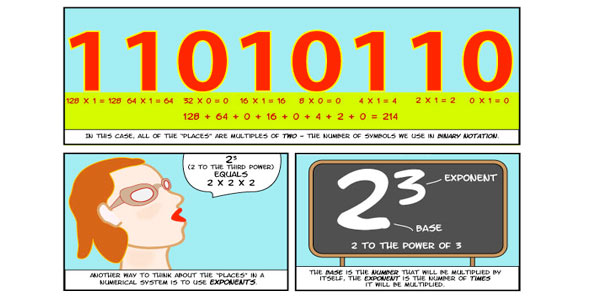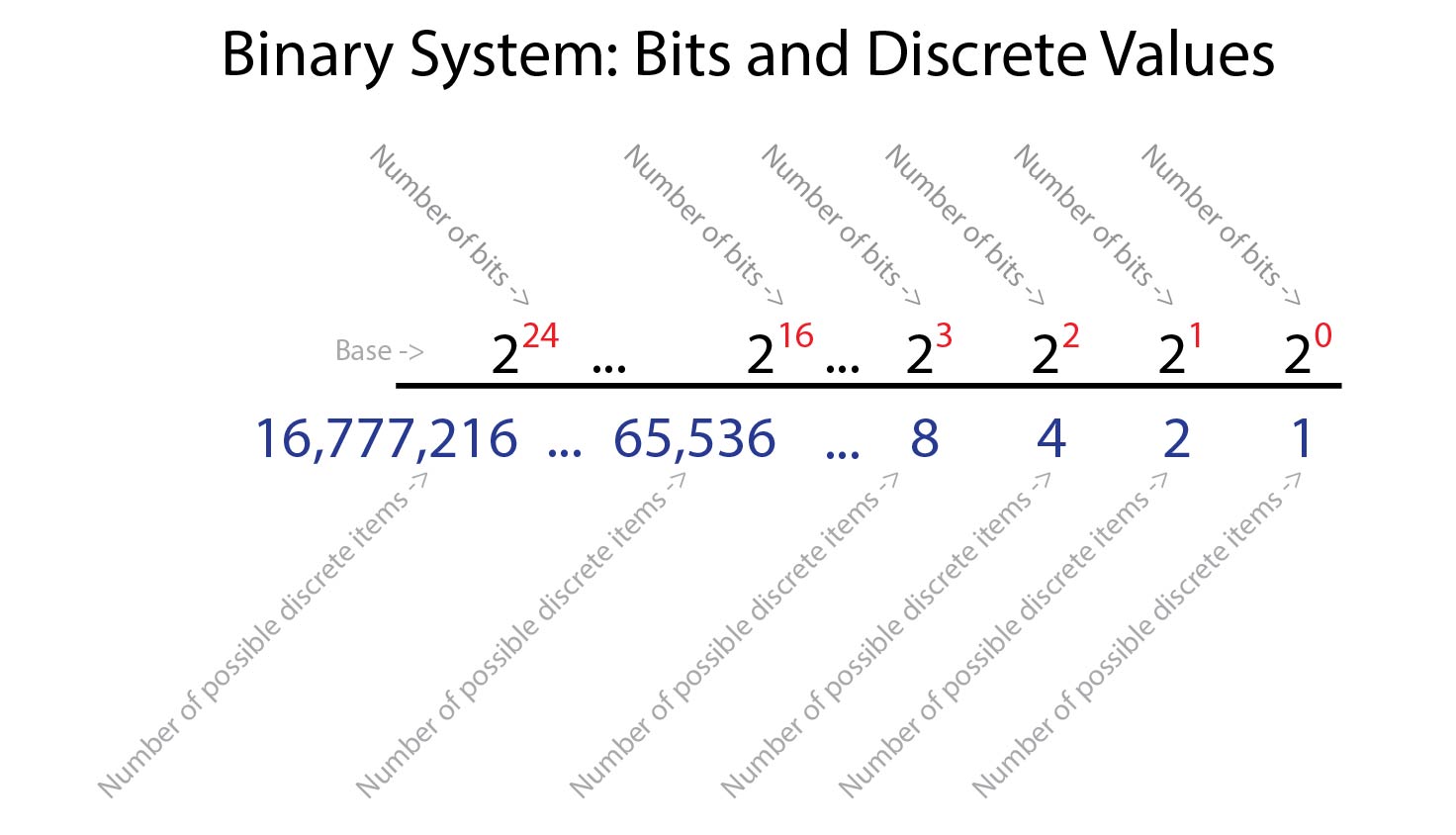Bits and Beyond
I made a mistake on the chart that I posted the other day. And thanks to a reader, I was able to quickly fix it and update the chart. It was in the piece I wrote called “Pushing Back” (here’s the link). I was critical of the stair step chart over at Audiophile Review and remade the chart using a different approach (no more stairs and blocks), but I labeled the vertical axes of the two charts by simply counting up the number of levels and multiplying by 6 (the number of dB of SNR per bit). This was an oversight and something that I should have caught I teach the subject of digital sampling using PCM to my advanced audio students. I would have flunked that section of my own midterm exam.
It IS correct to associate the number of discrete levels (the horizontal axis) with dynamic range. Each bit in a PCM digital word equals about 6 dB of signal to noise ratio (the difference between the loudest sound and the noise floor). The formula is actually 1 + (6.02 * the number of bits) for those looking for precision. The more levels you have the greater the potential dynamic range. But what’s the correlation?
We have to look at some math to answer this question…binary math, in particular. The binary counting system is used in computers because digital memory and processors all work in two states and only two states. Some researchers have experimented with tri-state or even more states in their experimental designs but good old binary has proven to be the best system.
Binary counting is also called Base 2. We typically use Base 10 or the decimal system in every day life. The reason is obvious…we all have 10 fingers. Using Base 2 means that we have only two different systems in our system…a one or a zero. Base 10 has 10 symbols (0 through 9). As we start counting, we move up through the symbols until we run out. In decimal this happens after 9. So we have to shift over to the left and bring in another column that can use the same symbols but which now have greater magnitude or weight.
In binary counting, we shift over to the next left column a lot more because we only have two states. The word length consists of these columns AND the number of columns is the number of bits.
Figure 1 – Binary counting and the relationship between the number of bits and the number of discrete values that can be used. [Click to enlarge]
So the word lengths of 16-bits and 24-bits produce a whole lot of discrete values. Is it infinite “resolution” as the analog audiophiles might ask? No, but it doesn’t have to be. The Nyquist-Shannon Theorem makes that question moot.
In the end, we want long word length because they provide greater dynamic range. We don’t get more “inner details” or “low level clarity” or more “dimensionality”. More bits means more discrete amplitude values and when properly dithered…lower noise levels, which means more dynamic range.
I’m sorry for the mistake the other day…it happens.



Why do most modern DAC’s have 32 bit capability? My Mcintosh d100 DAC does not have DSD capability but when my pure music player converts DSD to PCM, so that my d100 can play it, the DAC makes use of the 32 bits with a sampling frequency of 176khz. What’s goin’ on here?
Because 32-bit processing is easy…it’s already in the chip. Does it bring you any sonic benefit? Well, in the case of DSD converting to PCM the math might be a little better but the noise in the original DSD makes that a loser from the start. The 176.4 kHz is a multiple of 44.1 AND DSD, so it makes for a better conversion.
Hi Mark.
The more you write like this, the more i would like to know on the subject. Is there a text book or two that you could recommend ?
Thanks.
Boy, that’s a tough question. There’s lots of stuff online…but it just depends on what you want to learn, how deep you want to go and where you’re starting from. I don’t use a textbook in my classes because there’s isn’t anything that I’ve seen that covers what I want my students to know. That’s why I’m writing my own book.
It is an interesting subject, I’m going through this guide at the moment. As a numerical mathematician I prefer to look at the equations to understanding the underlying principles, so I’m using Mathcad (the guide looks like it uses Mathcad too) to reproduce the data. I’ve always wanted to get to grips with sampling theory and reading these articles by Mark gave me the push I needed.
It’s nice to know there are some really smart people reading this site. Any insights would be very much appreciated.
Thanks i had already spotted this one. It Will take a number of reads to get to grips with it but its fascinating none the less.